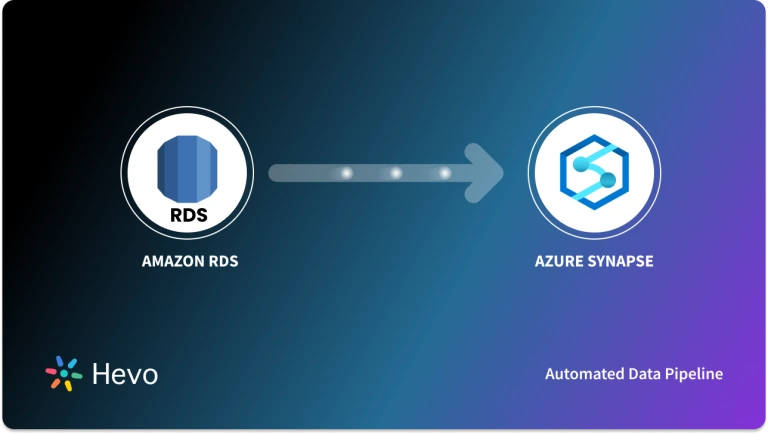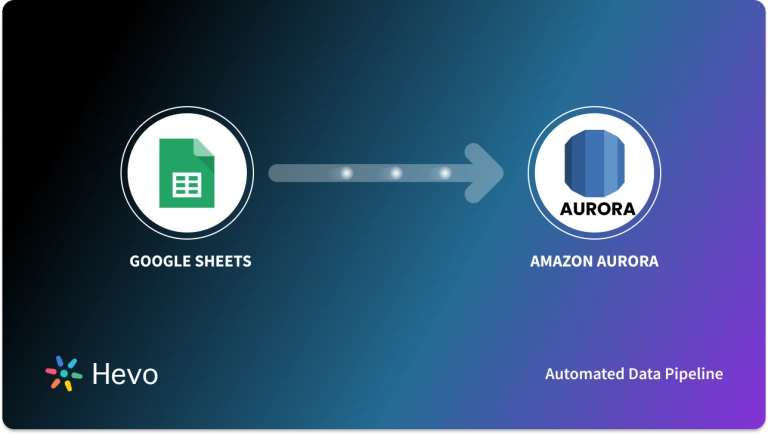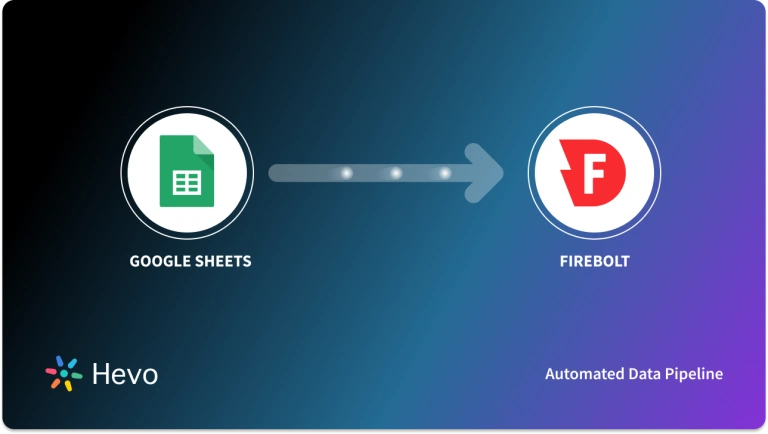Unlock the full potential of your Google Sheets data by integrating it seamlessly with Azure Synapse. With Hevo’s automated pipeline, get data flowing effortlessly—watch our 1-minute demo below to see it in action!
Businesses often rely on multiple data storage and processing services to meet their diverse requirements. Google Sheets and Azure Synapse are well-known choices used for storing data. While Google Sheets offer a cost-effective data storage facility, Azure Synapse provides data warehousing and advanced analytics capabilities. As a result, moving data from Google Sheets to Azure Synapse allows you to centralize data, run predictive models, and generate reports.
The article will provide you with two in-detail methods to move data from Google Sheets to Azure Synapse. Read along to know which method works best for you!
Method 1: Integrate Google Sheets to Azure Synapse Using Google Sheets Connector and Azure Data Factory
Export your data manually from Google Sheets using Google Sheets connector and Azure Data Factory.
Method 2: Integrate Google Sheets to Azure Synapse Automatically Using Hevo
Use Hevo’s automated, no-code pipeline to seamlessly transfer data from Google Sheets to Azure Synapse, ensuring real-time sync and pre/post-load transformations.
Prerequisites
- Google Drive APIs must be enabled for the service or user account
- The spreadsheet ID in your Google Sheets (only for Method 1)
- Spreadsheet name, start cell from where the data is required, and end cell of the sheet till where the data is required (only for Method 1)
- API token/API Key for the Google Sheets
- An Azure account with an active subscription
- Active Azure Synapse Analytics instance
- Connection settings for the Azure Synapse Analytics data warehouse
Table of Contents
Method 1: Building Google Sheets to Azure Synapse Pipeline using Google Sheets connector and Azure Data Factory
In this section, we will proceed with manual steps to set up the Google Sheets to Azure Synapse integration using Azure Data Factory. Azure Data Factory is a serverless data integration service offered by Microsoft Azure. It allows you to create, schedule, and orchestrate data workflows that move data from different sources and destinations.
The steps below illustrate how:
Step 1.1: Log in to your Microsoft Azure account, go to the Azure portal. Navigate to the Azure Data Factory Studio and select Create a new data factory radio button.
Step 1.2: Enter a unique name for the data factory. Select a preferred location and subscription while creating the new data factory. Click on Create. If you’ve already created a data factory, click on the Select an existing data factory in the radio button option. After selection, you will be directed to the homepage of the Azure Data Factory Studio.
Step 1.3: Click on the Manage tab present on the left side nav bar menu.
Step 1.4: You’ll be directed to the Linked Services page. Here you’ll create a new linked service to connect your Google Sheets maintained in your drive. Click on the Linked Service and then the + New button.
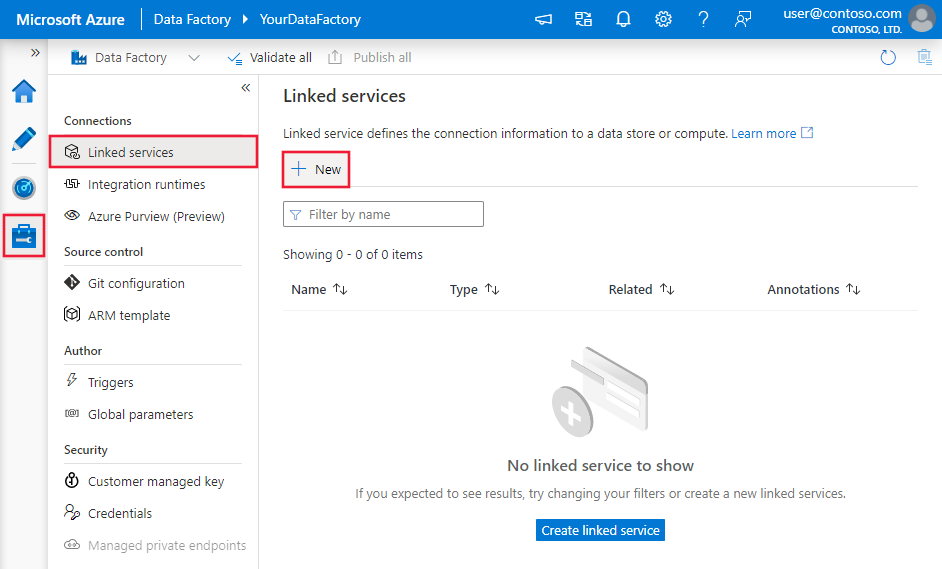
Step 1.5: Search for Google Sheets and click on Continue to start an instance of the Google Sheets connector.
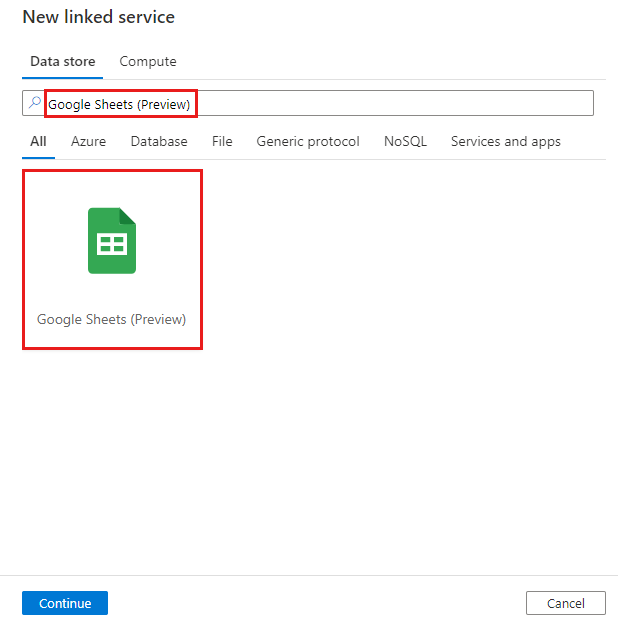
Step 1.6: Now configure the service details and test the connection. Provide a unique name for the linked service. In the connect via integration runtime, it will automatically select the AutoResolveIntegrationRuntime as it’s a cloud-based service. You can also change it to self-hosted runtime as per your requirements. Now, provide the API token for Google Sheets and click on Test connection. Once the connection is successful, click on the Create button.
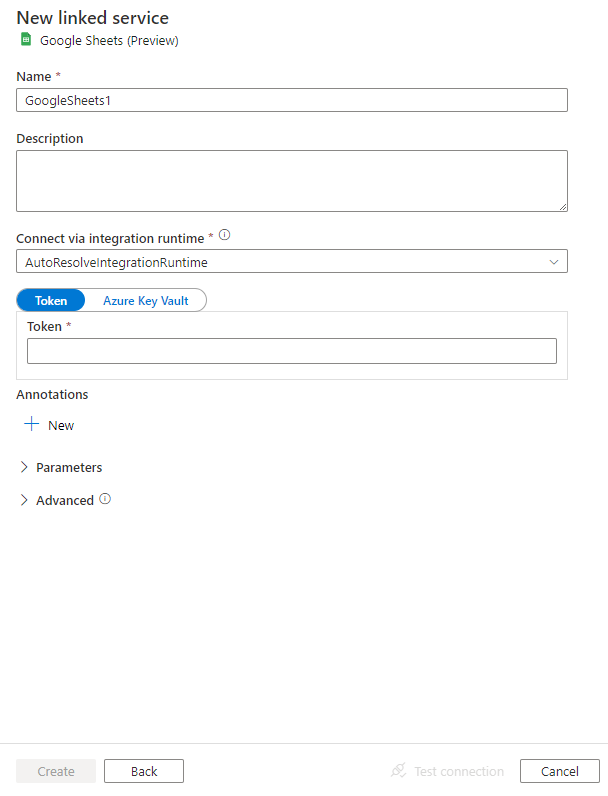
Step 1.7: Navigate back to the dashboard in order to create the first Azure Data Factory (ADF) pipeline. Go to the Author tab present on the left side of the dashboard. In Factory Resources, click on + > Pipeline > Pipeline. Inside the Activities tab, select Move & Transform and click on Data Flow.
Step 1.8: Once you create your Data Flow, you’ll be automatically sent to the data flow canvas. In the panel below the canvas, go to Settings and select + New, located beside the Data flow field.
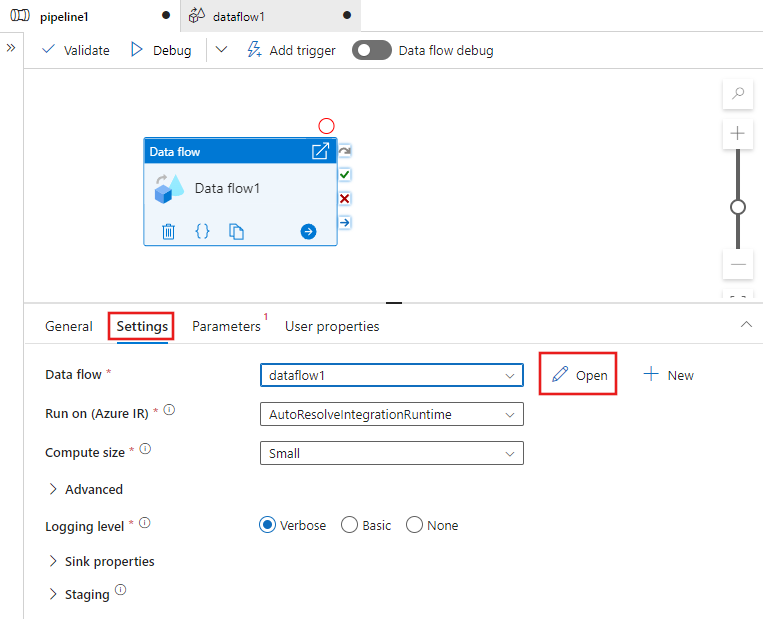
Step 1.9: In the data flow canvas, add a source by clicking on the Add Source box. This source links to the particular sheet within your Google Drive.
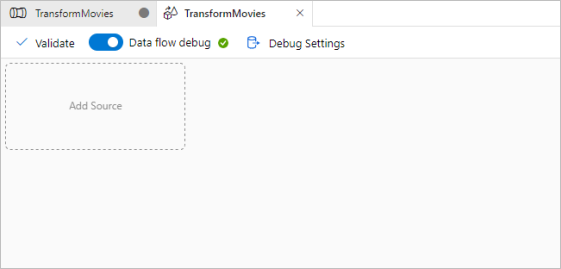
Step 1.10: In the Source settings, mention the source’s name and select the Source type as Inline. On selecting the Inline option, you’ll see an Inline dataset type dropdown. Search and select Google Sheets from the dropdown and mention the name that you’ve created for Google Sheet linked service (Step 6).

Step 1.11: Select the Source Options next to Source Settings. Mention the Spreadsheet ID, Sheet name, Start cell, and End cell to copy specific data from Google Sheets to Azure Synapse.
Step 1.12: Once you’ve provided all the details, check if all the data is copied correctly. One of the simplest ways to check is to enable the Data flow debug radio button and click on the OK button. It will take some time to connect. Once the data flow is ready, you’ll receive a notification.
Step 1.13: Next, go to Projection next to Source Options and click on Import Schema. Based on the data that is entered in your Sheet, the corresponding data types will be assumed by your Azure Data Factory. If you wish to change them, you can manually modify the data types. This allows you to successfully import the schema.
Step 1.14: Navigate to the Data Preview and click on Refresh. You’ll see specific data from your Google Sheets is migrated to Azure Data Factory successfully.
Step 1.15: To load data from Source to Azure Synapse, click on the + icon next to your source in the data flow canvas and select the Sink option from the dropdown.
Step 1.16: Name your sink and click + New to create your sink dataset. Choose Azure Synapse Analytics and click Continue.
Step 1.17: You’ll be directed to the Set Properties page. Inside the Linked Service, select the New option. On the New Linked Service page, scroll down to the Account selection method, and mention the Azure Subscription details, Server name, database name, username, and password. Click on Test Connection and Create. The linked service (Azure Synapse Analytics) has been successfully created.
Step 1.18: Now, create a table under the linked service that you’ve just created. Enter the Table name and select the Schema options. Click on the OK button.
Step 1.19: Enable the Data flow debug button and check if data migration is completed from Google Sheets to Azure Synapse. If not, click on the Refresh button to check the migrated or updated data.
Benefits of Using UI-based Native Integration for Migrating Google Sheets to Azure Synapse
The above process has several benefits as follows:
- Faster Implementation: Azure Data Factory offers a native Google Sheet connector, allowing seamless integration between Google Sheets and Synapse. This eliminates the need for custom coding or complex integration solutions. Azure Data Factory also provides a user-friendly graphical interface for configuring data pipelines. With the Google Sheet connector, you can quickly set the source and destination connections and schedule data movement tasks.
- Data Security: Since you’re not using any external tools to migrate data, it is ideal for heavily regulated organizations like healthcare and fintech. It ensures that your data doesn’t pass through third-party servers during data migration. Azure Data Factory supports security measures and data governance. You can control access to the data pipelines, encrypt data at rest and in transit, and enforce security policies to protect sensitive data during replication.
Limitations of Using Google Sheets Connector and Azure Data Factory to Move Data from Google Sheets to Azure Synapse
- Manual Updates: While creating a connection between Google Sheets and Azure Synapse, you provide the range of the cells. So, every time when the data appends in your Google Sheets, you would need to provide an exact cell range to collect the new data. Hence, it could be time-consuming while handling recurrent updates of multiple sheets.
- Monitoring and Alerting Limitations: While Azure Data Factory provides basic monitoring and alerting features, it does not provide real time monitoring of data pipelines. This might be difficult to pinpoint the root cause of an issue, particularly when an error occurs, leading to delays in troubleshooting.
Here is a simpler alternative.
Method 2: Using Hevo to Connect Google Sheets to Azure Synapse
Step 2.1: Set up Google Sheets as your Source

If you’d like more information about configuring Google Sheets as a data source, refer to the Hevo documentation to set up Google Sheets as a Source.
Step 2.2: Set up Azure Synapse as your Destination
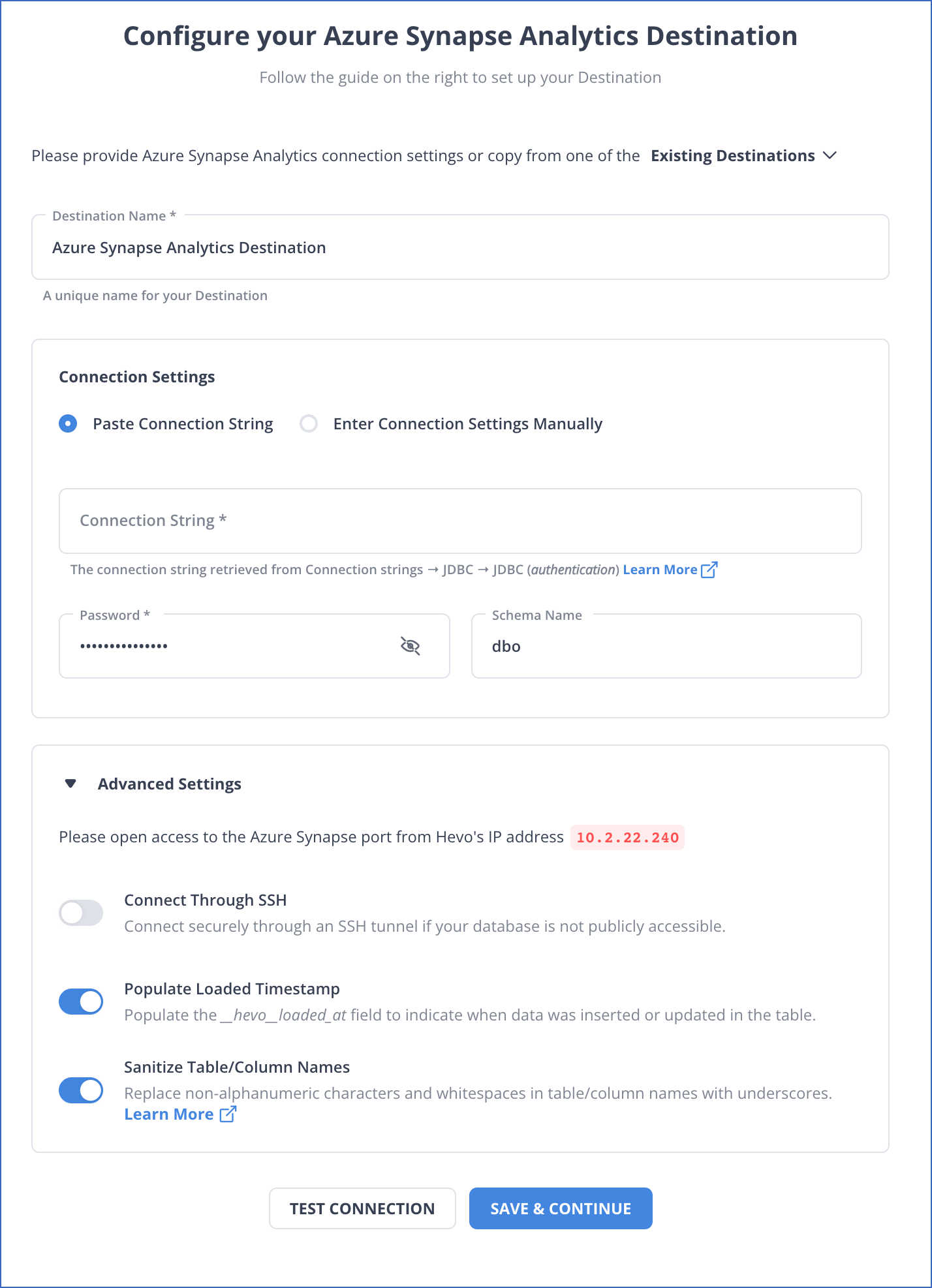
To know more details about configuring Azure Synapse as a destination, refer to the Hevo documentation to set up Azure Synapse as Destination.
Why is Hevo one of the Best Tools to Use?
- Wide Range of Connectors: Instantly connect and read data from 150+ sources, including SaaS apps and databases, and precisely control pipeline schedules down to the minute.
- In-built Transformations: Format your data on the fly with Hevo’s preload transformations using either the drag-and-drop interface, or our nifty Python interface. Generate analysis-ready data in your warehouse using Hevo’s Postload Transformation.
- Transparent Pricing: Say goodbye to complex and hidden pricing models. Hevo’s Transparent Pricing brings complete visibility to your ELT spend. Choose a plan based on your business needs. Stay in control with spend alerts and configurable credit limits for unforeseen spikes in data flow.
- Security: Discover peace with end-to-end encryption and compliance with all major security certifications, including HIPAA, GDPR, and SOC-2.
What can you Achieve by Replicating Data from Google Sheets to Azure Synapse?
Replicating data from Google Sheets to Azure Synapse can provide several benefits and enable various use cases. Here are some of them:
- Understand Your Customers: You can quickly unify your sheets and website data to understand your customers better. It will help you analyze and obtain actionable insights into your sales funnel.
- Increase Online Conversions: By centralizing data from Google Sheets into Azure Synapse, you can analyze your website traffic to understand the content performance. For instance, you can import your clickstream data and find the customer journey and engagements. This will assist you in offering better products and services for increased online conversions.
- Improve Marketing ROI: Azure Synapse provides robust data visualization and reporting capabilities through its integration with powerful BI tools. By replicating data from Google Sheets to Azure Synapse, you can gain a clear understanding of marketing performance and identify areas for improvement.
Also, check out how to connect Google Sheets to SQL Server to get a better understanding of how you can load your sheets data to other destinations and expand your use cases while working with Google Sheets.
Learn More:
- Azure Synapse vs Data Factory
- Azure Synapse vs Databricks
- Azure Synapse vs Snowflake
- Azure Synapse vs Azure SQL DB
Conclusion
The article demonstrated two methods to replicate data from Google Sheets to Microsoft Azure Synapse. This replication allows you to centralize data, run predictive models, and generate reports. One way to replicate this is by building pipelines using Google Sheets Connector and Azure Data Factory. But any manual update is time-consuming using this method, and there are limitations to monitoring and alerting.
Another method for the replication is by using a third-party replication tool like Hevo Data to Connect Google Sheets to Azure Synapse. Hevo can automate the replication process and liberate your engineering team’s bandwidth for other high-priority tasks. This also saves the overall cost of building pipelines.
Sign up for a 14-day free trial and simplify your data integration process. Check out the pricing details to understand which plan fulfills all your business needs.
FAQ on Google Sheets to Azure Synapse
1. How do I import data into Azure Synapse?
To import data into Azure Synapse Analytics, you can use Azure Data Factory or PolyBase to ingest data from various sources such as files and databases or stream data into Synapse dedicated SQL pools for analysis and processing.
2. Can Google Sheets connect to ODBC?
Yes, Google Sheets can connect to ODBC data sources using third-party add-ons or plugins like “ODBC Query Tool” to facilitate data retrieval and manipulation.
3. How do I connect Excel to Azure Synapse?
To connect Excel to Azure Synapse, use Excel’s Data Connection Wizard to establish a connection via ODBC or OLE DB, specifying the Azure Synapse server details and authentication method (such as Azure Active Directory or SQL Server authentication).
4. How do I upload files to Synapse?
To upload files to Azure Synapse Analytics, use Azure Data Factory to create a data pipeline that includes a Copy activity specifying the source file location (e.g., Azure Blob Storage) and the destination in Synapse.






